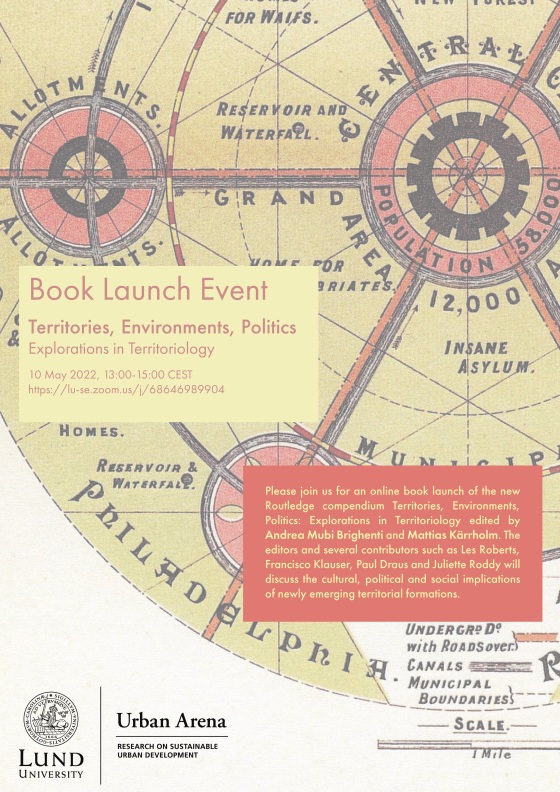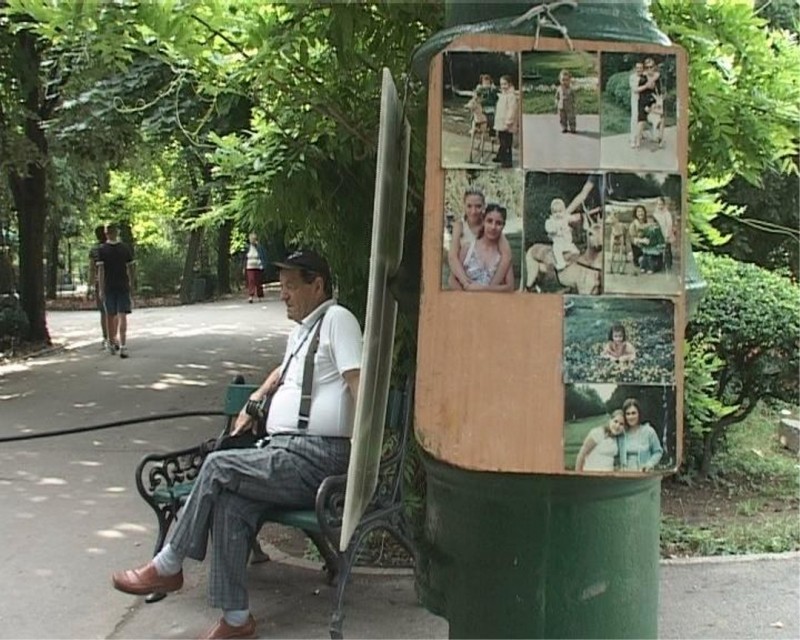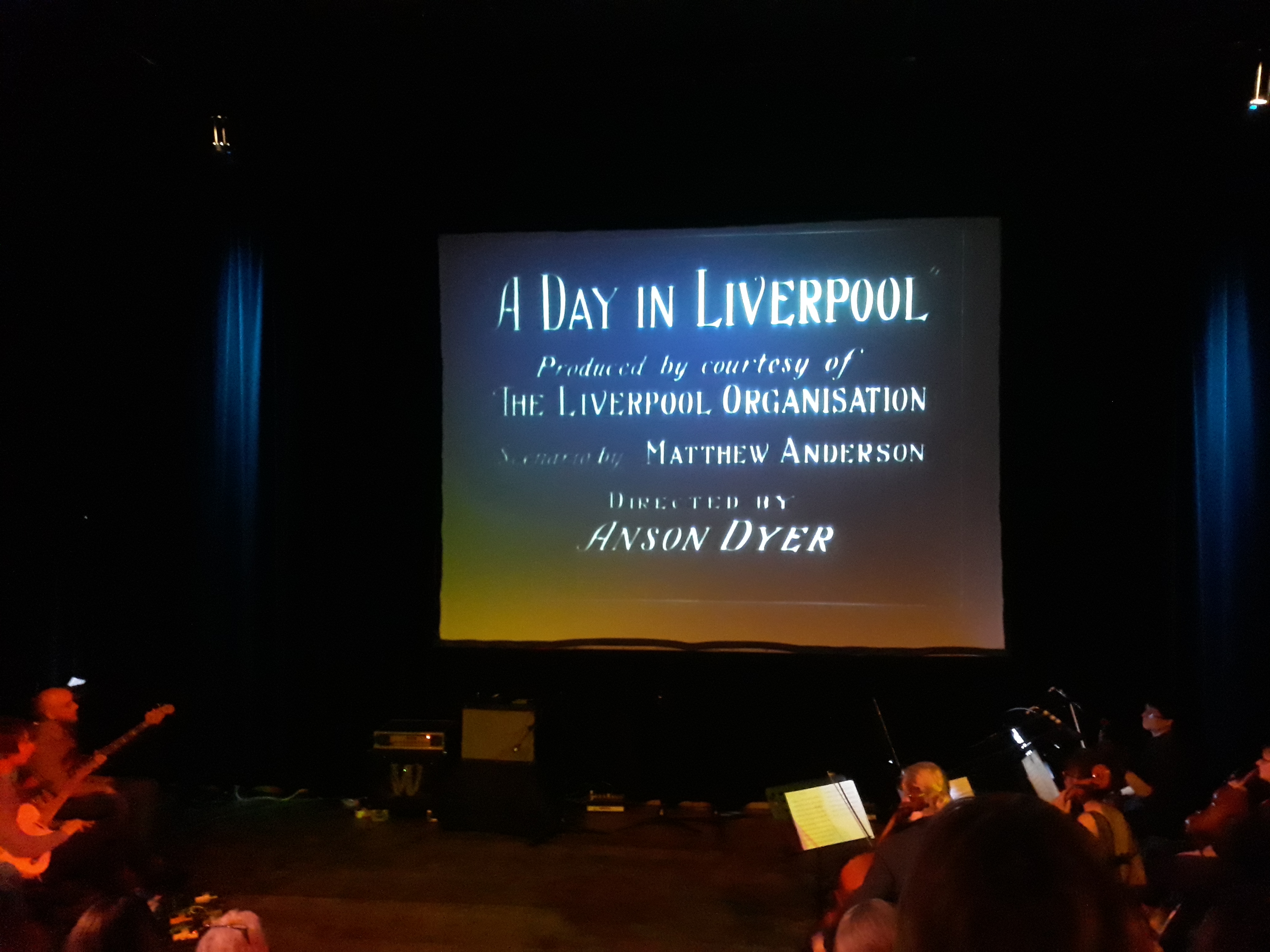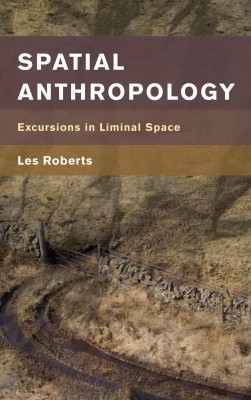
In this blog I wish to sound off about – or provide some considered critical reflections on, you decide which it is – the process of obtaining research ethics approval for projects that employ what may broadly be understood as autoethnographic methods. The subject matter for this blog entry has come about as a result both of observing (in ways that, I guess, qualify as autoethnographic reflection) how research ethics considerations are being administered procedurally, and as part of a process of broader critical engagement with questions of method as these apply to debates and practices in the spatial humanities. In respect of the latter, these thoughts have been developed in more expansive form in two publications that I have been working on for the past year or so, a monograph Spatial Anthropology: Excursions in Liminal Space (Roberts 2018a), and a special issue of the online open-access journal Humanities, which I guest edited under the title of: Spatial Bricolage: Methodological Eclecticism and the Poetics of ‘Making Do’ (Roberts 2017-18).
But first of all let me address the titular reference to ‘covert autoethnography’. To date, the only occasion that I have been confronted with this most intriguing of methodological strategies is at a procedural level (i.e. as raised in the course of trying to secure institutional ethics approval for a research project). My initial response when presented with the idea of ‘covert autoethnography’ was one of bemusement. Covert ethnography clearly makes sense and is entirely legitimate to raise in relation to research ethics considerations. But covert autoethnography made about as much sense to me as the idea of covert masturbation (try it, see if you can go all the way without noticing). Then I pondered it some more and, while I would maintain that it is unquestionably a meaningless term and entirely unworkable as a concern premised on the delivery of a practical response, it does nevertheless raise interesting questions as to the where a line may be unambiguously drawn between autoethnography and ethnography in terms of the ‘visibility’ of the researcher (as distinct from a ‘regular’ individual going about his or her everyday business). This is where the masturbation analogy doesn’t hold up so well. If I am autoethnographically attuned to the world of phenomena to which my attention is turned, then, in the first instance at least, it is myself to whom I am accountable. For it not to be so would be to abrogate any sense of my being able to authoritatively reflect on matters based on what I myself have directly observed and understood from what is going on in the world around me. As with the art of sexual self-service, this does not pose too great a problem when the activity is confined to the individual in his or her capacity as a lone operator. The minute the autoethnographer and/or onanist then plies their trade in public we are confronted with an altogether different ethical scenario. One of these figures will end up being bundled into the back of a police car and driven briskly away, and few would see this as any major infringement on basic human rights. The other – the autoethnographer – is saddled with a less conspicuous sense of social responsibility whereby any potential ethical transgression is less (nakedly) transparent. Its realisation can only ever be deferred if, indeed, it is ever made manifest at all. Any ethical concerns will only be revealed as such to the extent that any other parties that are drawn in to the orbit of the working autoethnographer feel they have been misled or taken advantage of in some way. The autoethnographer clearly does not operate in a social vacuum, and in that respect, unless making their researcher ‘identity’ a matter of very evident disclosure (perhaps by wearing some sort of hat with the words ‘autoethnographer at work’ emblazoned on the peak, or by requesting written consent before engaging in any and every form of social interaction), s/he is by definition acting ‘covertly’. And therein lies the rub.
‘In practice,’ argues American communications scholar Arthur Bochner, ‘autoethnography is not so much a methodology as a way of life. It is a way of life that acknowledges contingency, finitude, embeddedness in storied being, encounters with Otherness, an appraisal of ethical and moral commitments, and a desire to keep conversation going’ (2013: 53). If we accept that autoethnography is a way of life, or that, in practice, it is indivisible from how we might routinely engage with others as part and parcel of everyday social discourse, then clearly it is not a ‘method’ that can (or should be) rigorously policed through the imposition of a standardised code of institutional research ethics. The regrettable connotation that the term ‘covert autoethnography’ undoubtedly helps reinforce is the idea that the practice of autoethnography can be neatly assigned to a specific social arena or period of time. This does, of course, depend as to what (or where) constitutes the ‘field’ of research practice in any given instance. But more often than not the researcher does not find themselves in a position where they might purposely declare ‘OK, I’m ready – now I am going into the field, putting my autoethnographer’s hat on and getting down to business’. It generally doesn’t work that way. Autoethnography may not necessarily be thought of as autoethnography at the time and place from whence narrative observations have been reflexively drawn; it is entirely conceivable that their significance may only be registered as noteworthy retrospectively (i.e. in the form of autoethnographic memory).
In ‘Spatial bricolage: the art of poetically making do’ (Roberts 2018b), I address these and related concerns with specific reference to the idea of the ‘researcher-as-bricoleur’ (Denzin and Lincoln 2011) and to an interdisciplinary understanding of space and its practice as a form of bricolage: of methodologically ‘making do’. As I note in that article, the eclecticism of bricolage methods can invite accusations of superficiality and lack of rigour. In such circumstances the researcher-as-bricoleur comes across as a ‘jack-of-all-trades’ (and, by implication, master of none), someone who plays fast-and-loose with established research methods and paradigms. By way of illustration, critical pedagogist Joe Kincheloe describes problems he and his students encountered at university committee meetings and job interviews when advancing the merits of bricolage (and by extension interdisciplinary) approaches to their work as academics. ‘Implicit in the critique of interdisciplinarity’, he writes, ‘and thus of bricolage as its manifestation in research is the assumption that interdisciplinarity is by nature superficial’ (2001: 680-1). A commitment to research eclecticism – of ‘allowing circumstance to shape methods employed’ (Kincheloe et al 2011: 168-9) – can thus be seen, by some, as inherently problematic and something that shouldn’t really be encouraged. Putting what Norman Denzin refers to as the ‘Performative-I on stage’ or seeking to get recognition of autoethnography as a ‘disruptive practice’ (Denzin 2014: 11, 23) are not the easiest of propositions to sell to the average ethics review committee or institutional review board:
The IRB [institutional review board] framework assumes that one model of research fits all forms of inquiry, but that is not the case. This model requires that researchers fill out forms concerning subjects’ informed consent, the risks and benefits of the research for subjects, confidentiality, and voluntary participation. The model also presumes a static, monolithic view of the human subject. Performance autoethnography, for example, falls outside this model… Participation is entirely voluntary, hence there is no need for subjects to sign forms indicating that their consent is ‘informed.’ The activities that makes up the research are participatory; that is, they are performative, collaborative, and action and praxis based. (Denzin 2003: 249-250)
In a similar vein, bringing a performative and autoethnographic sensibility to the sociocultural study of space is to take it as read that our understanding and experience of space is itself action and praxis based. To question a space by the simple act of stepping into it is, by definition, already a breach of boundaries. We cannot roam wherever we like whenever we like but where lines are ‘legitimately’ drawn in any given scenario is fuzzy at best. However much (or little) truck a university ethics committee might have with the argument that researchers themselves should be at liberty to exercise some degree of ethical circumspection, the fact remains that, within the framework of what is deemed possible (if not necessarily defensible), the responsibility for action lies with the actor. As Marilys Guillemin and Lynn Gillam point out, procedural ethics and ‘ethics in practice’ are not the same thing; the latter – the day-to-day ethical issues that arise during the course of research activity – are subject to the reflexive considerations that the researcher is faced with as s/he responds to events and experiences as they present themselves in practice. Reflexivity thus ‘comes into play in the field, where research ethics committees are not accessible’ (2004: 274), making it, from a procedural point of view (i.e. that of a research ethics committee or institutional review board), a concept that is not even afforded any ethical significance (as if the ethical ‘work’ can be got out of the way at committee stage and any subsequent reflexivity on the part of the researcher restricted to matters solely practical, not ethical).
Reflexivity lies at the core of how and why the autoethnographer does what s/he does. Attention is thrown back on to the researcher in the field, not as an exercise in self-indulgence, but to recognise that the process of ‘making do’ requires the researcher to step in to any given space in ways that her presence – her creativity and performance; her intersubjectivity; her body; her experience – becomes constitutive of that space. In this respect, the spatial bricoleur is as autoethnographically invested in the space or spaces he immerses himself in as he is in any other that are routinely encountered in everyday life. For the autoethnographer ‘in the field’ it is no more possible to maintain a non-dialogical distinction between procedural ethics and ethics-in-practice as it is in any other socio-spatial context. This does not mean that ethical considerations made ‘in practice’ automatically trump those made procedurally, or that they extend licence, by default, to the reflexively aware researcher. What it does point to is the pedagogic presumption of what Denzin calls a ‘communitarian dialogical ethic of care and responsibility. It presumes that performances occur in sacred aesthetic spaces where research does not operate as a dirty word’ (2014: 80, emphasis in original). On the part of the institution, it may not be that the risks themselves are considered high or of any immediate concern in terms of the research outline being proposed. It may instead simply be that the very idea of academic research as ‘bricolage’ or that methods may be applied in an ‘eclectic’ fashion (or, indeed, that the merits of chance, provocation or performativity are being earnestly promoted) is enough to raise the alarm bells (not to mention the eyebrows of administrators and the legions of bureaucrats who have secured a well-established foothold in the neoliberal academy). On that basis alone, the case for making autoethnography and the researcher-as-bricoleur as a focus of critical discussion is, I am suggesting, persuasive and cogent.
In seeking to cast a much-needed critical spotlight on the regime of qualitative research ethics scrutiny it is important to stress that my intention is not in any way to play down the seriousness of ethical matters as they relate to academic research practices and methods. Nor is it to suggest that research ethics should be wrested free from all forms of procedural governance and administration. My aim is not even to make the rather obvious point that the current system of research ethics scrutiny is demonstrably out of step with the practical realities faced by many academics and their students working in research environments where eclecticism, interdisciplinarity, some degree of bricolage, or of creativity and performativity, has long been the norm. Rather than making a case against the imposition of research ethics frameworks, my intention, if anything, is the opposite. It is to make the case for research ethics to be thought about differently; to persuade those that need persuading that procedural ethics and ethics-in-practice are, or should be, a conversation: an open, flexible, and above all dialogical ethic of care and responsibility. Procedural ethics should not be just an instrumental mechanism to dictate what ethics-in-practice unbendingly need to comply with, with all the inflexibility and standardisation that such a one-way discourse helps cement. A procedural ethics that understands and respects the idea of experiential ethics-in-practice is one that recognises that qualitative researchers, as with any other academic, whatever their methodological orientation, are qualified professionals whose skill-set, by definition, extends to their having to make ethical judgements and reflexive decisions ‘on the go’ (that is to say: in practice). They do not park their ethical responsibilities once they’ve been given institutional approval and set out for the field with the knowledge that they’ve been ‘cleared’ for ethically appropriate action. They bring ethics to their practice as critically reflexive and socially engaged researchers whose responsibility, as they see it, also extends to the provision and sustainability of productive research environments for their students. A procedural ethics that understands and respects this ethos is one that recognises that students also need to be given the space to work through ethics-in-practice as part of their own journey towards becoming critically reflexive and socially engaged citizens, wherever their professional careers may take them. From a critical pedagogical standpoint, talk of ‘covert autoethnography’, with its Orwellian overtones (the implication that critical reflection should be held in check lest the very act of thinking infringes on the rights of others) thus more than justifies a committed ethical response. In making the case for ethics-in-practice, this blog provides a small, but hopefully not too insignificant contribution to this unfolding conversation.
Les Roberts, April 2018
References
Bochner, Arthur P. 2013. ‘Putting Meanings into Motion: Autoethnography’s Existential Calling’, in Stacy Holman Jones, Tony E. Adams, Carolyn Ellis (eds.), Handbook of Autoethnography. Walnut Creek: Left Coast Press, pp. 50-56.
Denzin, Norman K. 2003. Performance Ethnography: Critical Pedagogy and the Politics of Culture. London: SAGE.
Denzin, Norman K. 2014. Interpretive Autoethnography. 2nd Edition. London: SAGE.
Denzin, Norman K. and Yvonna S. Lincoln. 2011. ‘Introduction: The Discipline and Practice of Qualitative Research’, in Norman K. Denzin and Yvonna S. Lincoln (eds.), The Sage Handbook of Qualitative Research. 4th Edition. London: SAGE, pp. 1-19.
Guillemin, Marilys and Lynn Gillam. 2004. ‘Ethics, Reflexivity, and “Ethically Important Moments” in Research’, in Qualitative Inquiry 10 (2): 261-280. https://doi.org/10.1177/1077800403262360
Kincheloe, Joe, Peter McLaren and Shirley R. Steinberg. 2011. ‘Critical Pedagogy and Qualitative Research: Moving to the Bricolage’, in Norman K. Denzin and Yvonna S. Lincoln (eds.), The Sage Handbook of Qualitative Research. 4th Edition. London: SAGE, pp. 163-177.
Kincheloe, Joe. 2001. ‘Describing the Bricolage: Conceptualizing a New Rigor in Qualitative Research’, in Qualitative Inquiry 7 (6): 679-692. https://doi.org/10.1177/107780040100700601
Les Roberts. 2017-18. Special Issue on ‘Spatial Bricolage: Methodological Eclecticism and the Poetics of “Making Do”‘, Humanities, 7. www.mdpi.com/journal/humanities/special_issues/spatial_bricolage
Roberts, Les. 2018a. Spatial Anthropology: Excursions in Liminal Space. London: Rowman & Littlefield.
Les Roberts. 2018b. ‘Spatial bricolage: the art of poetically making do’, in Les Roberts (ed.), Special Issue on ‘Spatial Bricolage: Methodological Eclecticism and the Poetics of “Making Do”‘, Humanities, 7. https://doi.org/10.3390/h7020043







 I visited the University of Liverpool in London campus for the first time this week. I remember when the building it occupies was the Bank of Nova Scotia. This was back in the 1990s when I was working in the area for a period (the bus stopped right outside). The building still has the feel and corporate ambience of an investment bank, which I suppose seems appropriate given the ‘trading’ of knowledge that is now expected to take place in the brave new marketised world of the neoliberal university.
I visited the University of Liverpool in London campus for the first time this week. I remember when the building it occupies was the Bank of Nova Scotia. This was back in the 1990s when I was working in the area for a period (the bus stopped right outside). The building still has the feel and corporate ambience of an investment bank, which I suppose seems appropriate given the ‘trading’ of knowledge that is now expected to take place in the brave new marketised world of the neoliberal university. 
 Arrived back last night from this year’s
Arrived back last night from this year’s  Very sad indeed to hear the news of Agnes Varda’s passing. A truly inspirational figure and up there with the greats. I first became acquainted with her films when working on my PhD in the early 2000s and have been smitten ever since. The Gleaners and I remains one of my favourite films of any director. It never ceases to enchant and inspire. Other stand out films for me include Vagabond, Cleo from 5 to 7, Daguerreotypes, The Beaches of Agnes, and the recent Faces/Places. But for me all of her work stands up to repeated viewings. I was very fortunate to see her in conversation at FACT in Liverpool last year as part of the 2018 Liverpool Biennial. The photograph above was taken afterwards outside FACT. I will miss her playfulness, creativity and indefatigable energy.
Very sad indeed to hear the news of Agnes Varda’s passing. A truly inspirational figure and up there with the greats. I first became acquainted with her films when working on my PhD in the early 2000s and have been smitten ever since. The Gleaners and I remains one of my favourite films of any director. It never ceases to enchant and inspire. Other stand out films for me include Vagabond, Cleo from 5 to 7, Daguerreotypes, The Beaches of Agnes, and the recent Faces/Places. But for me all of her work stands up to repeated viewings. I was very fortunate to see her in conversation at FACT in Liverpool last year as part of the 2018 Liverpool Biennial. The photograph above was taken afterwards outside FACT. I will miss her playfulness, creativity and indefatigable energy. I-Media-Cities Conference Brussels
I-Media-Cities Conference Brussels It has been a while since I’ve uploaded anything to the ‘
It has been a while since I’ve uploaded anything to the ‘




